UPSC Daily Current Affairs: 27 August 2024 | Current Affairs & Hindu Analysis: Daily, Weekly & Monthly PDF Download
GS2/Governance
Polio Vaccine Triggered the Infection in a Child in Meghalaya
Source: Indian Express
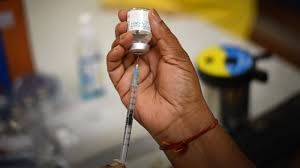
Why in news?
A two-year-old child in Meghalaya's West Garo Hills district has tested positive for polio, a highly contagious viral disease that has been largely eradicated thanks to widespread vaccination efforts. The Union health ministry has clarified that this case is "vaccine-derived" and does not pose a threat to India's polio-free status. Nevertheless, officials are taking precautions to prevent any potential spread of the infection.
Vaccine-derived Polio
- About Polio
- Polio, short for poliomyelitis, is a viral illness caused by the poliovirus.
- It primarily affects young children and can lead to serious health issues, including paralysis, muscle weakness, and even death.
- The virus primarily spreads through contaminated food and water or through contact with an infected individual.
- Symptoms of Poliovirus
- Most polio infections are asymptomatic, but a small percentage can result in paralysis by affecting the nervous system.
- Symptoms may include fatigue, fever, headaches, vomiting, diarrhea or constipation, sore throat, neck stiffness, pain or tingling in the arms and legs, severe headaches, and sensitivity to light (photophobia).
- Types of Poliovirus
- There are three types of poliovirus: wild poliovirus type 1 (WPV1), wild poliovirus type 2 (WPV2), and wild poliovirus type 3 (WPV3).
- Polio in India
- Polio was once a significant public health issue in India, affecting thousands of children annually.
- In 1995, India initiated the Pulse Polio immunization program to eradicate the disease.
- This program was part of the Global Polio Eradication Initiative (GPEI), launched in 1988 by WHO and various national governments and organizations.
- The initiative aimed for 100% coverage by administering polio drops to children aged 0-5 across the country on a single day.
- Through mass immunization drives known as Pulse Polio campaigns and the dedicated efforts of health workers, India significantly reduced polio cases.
- India was officially declared polio-free by the World Health Organization (WHO) in 2014 after three consecutive years without any new cases of wild poliovirus.
- The country continues to maintain high vigilance with ongoing immunization efforts to prevent the re-emergence of the disease, particularly from vaccine-derived strains.
- Vaccine-derived Poliovirus
- This strain is associated with the weakened live virus found in the oral polio vaccine (OPV).
- While OPV is largely safe and has effectively eradicated polio in many regions, it can, in rare cases, lead to the disease in children with compromised immune systems.
- Experts note that OPV can result in vaccine-derived infections in two primary ways:
- The weakened virus may circulate among children, eventually regaining its ability to cause severe infection.
- It can cause chronic infections in immunocompromised children, replicating in their intestines and gradually regaining virulence.
- The recent polio case in Meghalaya seems to be an example of the latter scenario.
- It is easier to manage the spread of these vaccine-derived variants, as other children in the vicinity are likely fully immunized.
- One in every 150,000 children in India who receive the OPV may experience infection from it.
- Even if children in an area where such a case is reported are fully vaccinated, health workers must administer immunizations again as a preventive measure.
- Detection of Vaccine-derived Polio Cases in India
- India's last confirmed case of wild poliovirus occurred in 2011 in Howrah district, West Bengal.
- India was declared polio-free in 2014 after successfully preventing any wild polio infections for three years.
- During this time, however, cases of vaccine-derived polio have continued to surface.
- In 2013, an eleven-month-old child with immune deficiencies from Beed district in Maharashtra died due to vaccine-derived polio.
- Other vaccine-derived polio cases have been reported nationwide, with the most recent case (before the one in Meghalaya) occurring in Kerala in July 2024.
- These cases do not impact India's polio-free status, as only the detection of wild poliovirus would change that classification.
- Injectable Polio Vaccine (IPV) as a Tool to Prevent the Spread of Vaccine-derived Polio
- The Oral Polio Vaccine (OPV) has proven highly effective in curtailing poliovirus spread and is central to global eradication efforts due to its ease of administration.
- In rare instances, OPV can lead to infection and transmission to others.
- This has prompted some experts to advocate for a shift to the Injectable Polio Vaccine (IPV), which does not carry the risk of vaccine-derived polio because it does not contain live virus.
- Nevertheless, IPV presents its own challenges:
- It requires trained personnel for administration, which may reduce immunization rates.
- It does not prevent the transmission of the virus from person to person.
- High immunization coverage is crucial to prevent outbreaks.
- Use of IPV in India
- While countries like Canada and the US have fully adopted IPV, India employs both vaccines—IPV during routine immunization and OPV during Pulse Polio Days.
- Experts indicate that India utilizes IPV sub-optimally, administering only one shot compared to the three shots and a booster used in other countries, necessitating the continued use of OPV to sustain immunity levels.
GS2/Polity
What is the National Medical Register (NMR) Portal?
Source: The Hindu
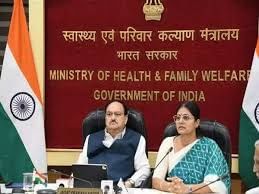
Why in News?
The Union Health Minister recently launched the National Medical Register Portal in New Delhi.
About National Medical Register (NMR) Portal
- The NMR Portal is an initiative of the National Medical Commission (NMC) aimed at registering all MBBS doctors eligible for practice in India.
- This registration is mandated under Section 31 of the National Medical Commission (NMC) Act, 2019.
- The Act requires the Ethics and Medical Registration Board (EMRB) of the NMC to maintain a National Register in electronic format, which includes details such as name, address, and recognized qualifications of licensed medical practitioners.
- NMR serves as a comprehensive and dynamic database for allopathic (MBBS) registered doctors in India.
- A unique feature of the NMR is its linkage with the Aadhaar ID of doctors, ensuring their authenticity.
- The registration process through the NMR is user-friendly and conducted online.
- All medical colleges and institutions, including Institutes of National Importance (INIs) and State Medical Councils (SMCs), are interconnected on this portal.
- While some information is accessible to the public, additional data is restricted to the EMRB, SMCs, the National Board of Examinations (NBE), Medical Institutions, and Registered Medical Practitioners (RMPs).
- The portal provides various functionalities, such as adding extra qualifications, tracking application statuses, suspending licenses, and issuing NMR ID cards and digital doctor certificates.
- The NMR system is designed to be continuously improved, enhancing the registration process over time.
GS2/Polity
Election Commission of India (ECI)
Source: Indian Express

Why in News?
Recently, the Election Commission of India (ECI) has completed the 18th Lok Sabha elections and has set dates for Assembly elections in Jammu and Kashmir and Haryana, highlighting its vital role in promoting transparent, free, and fair elections throughout India.
About the Election Commission of India (ECI):
- Constitutional foundation:
- Permanent and independent body: The ECI is a permanent and autonomous constitutional authority, established under Article 324 of the Indian Constitution.
- Primary role: It is tasked with organizing elections for the Parliament, State Legislatures, and the offices of the President and Vice President of India.
- Constitutional provisions: The ECI is empowered to oversee, direct, and manage the preparation of electoral rolls and the conduct of all elections to the Parliament and State Legislatures.
- Article 325: Ensures that no individual is excluded from the electoral rolls on the grounds of religion, race, caste, or gender.
- Article 326: Establishes adult suffrage, granting voting rights to all citizens aged 18 and above as the basis for elections.
- Article 327: Grants Parliament the authority to enact laws concerning elections to Parliament and state legislatures.
- Article 328: Empowers state legislatures to establish regulations related to elections within their jurisdiction.
- Article 329: Prohibits judicial interference in electoral issues.
- Functions and jurisdiction:
- Advisory role: The ECI advises the President or Governor on matters concerning the disqualification of members of Parliament and State Legislatures, particularly in cases of corrupt electoral practices.
- Quasi-Judicial role: The ECI has the authority to disqualify candidates for failing to submit their election expense reports and to resolve disputes regarding the recognition of political parties and the allocation of election symbols.
- Administrative role: The ECI is responsible for the delimitation of electoral constituencies, voter registration, updating electoral rolls, and scheduling election dates. It also ensures compliance with the Model Code of Conduct during elections and monitors political campaign expenditures.
- Composition:
- Structure: Initially, the ECI had a single member, the Chief Election Commissioner (CEC). In 1989, following the reduction of the voting age from 21 to 18, two additional Election Commissioners were appointed, resulting in a three-member body.
- Appointments: The President of India appoints the Chief Election Commissioner and the two Election Commissioners. Their term is limited to a maximum of six years or until they reach the age of 65, whichever comes first.
- Removal process: The Chief Election Commissioner can only be removed from office in a manner similar to that of a Supreme Court judge, requiring a special majority in both Houses of Parliament.
GS3/Science and Technology
What is RHUMI-1?
Source: Hindustan Times
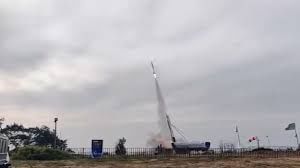
Why in News?
India has reached a noteworthy achievement in its space exploration efforts with the recent launch of its inaugural reusable hybrid rocket, RHUMI-1.
About RHUMI-1:
- It represents India's first reusable hybrid rocket.
- Developed by the Tamil Nadu-based startup Space Zone India in partnership with the Martin Group.
- Features an innovative hybrid propulsion system that merges the benefits of both liquid and solid fuels.
- The hybrid configuration utilizes solid propellant combined with a liquid oxidizer, mitigating the risk of accidental detonation by mixing these components only during the combustion phase.
- This technological advancement offers enhanced efficiency and lowers operational costs.
- Equipped with a CO2-triggered parachute system, an environmentally friendly and economical mechanism that guarantees the safe retrieval of rocket components post-launch.
- It is entirely devoid of fireworks and does not utilize Trinitrotoluene (TNT).
About the Launch:
- The launch took place from the East Coast Road Beach in Thiruvidandhai, Chennai.
- The rocket carried three Cube Satellites and fifty PICO Satellites, which were propelled into a suborbital trajectory.
- Utilized India's first hydraulic mobile launch system, allowing for flexible and adaptable launch operations from various sites at angles ranging from 0 to 120 degrees.
- The Cube Satellites are designated for monitoring and gathering data on atmospheric conditions, including cosmic radiation intensity, UV radiation intensity, and air quality.
- The PICO Satellites aim to analyze environmental aspects such as vibrations, accelerometer data, altitude, ozone levels, and the presence of toxic substances, thereby offering valuable insights into atmospheric dynamics.
GS2/Governance
What is the New India Literacy Programme (NILP)?
Source: The Hindu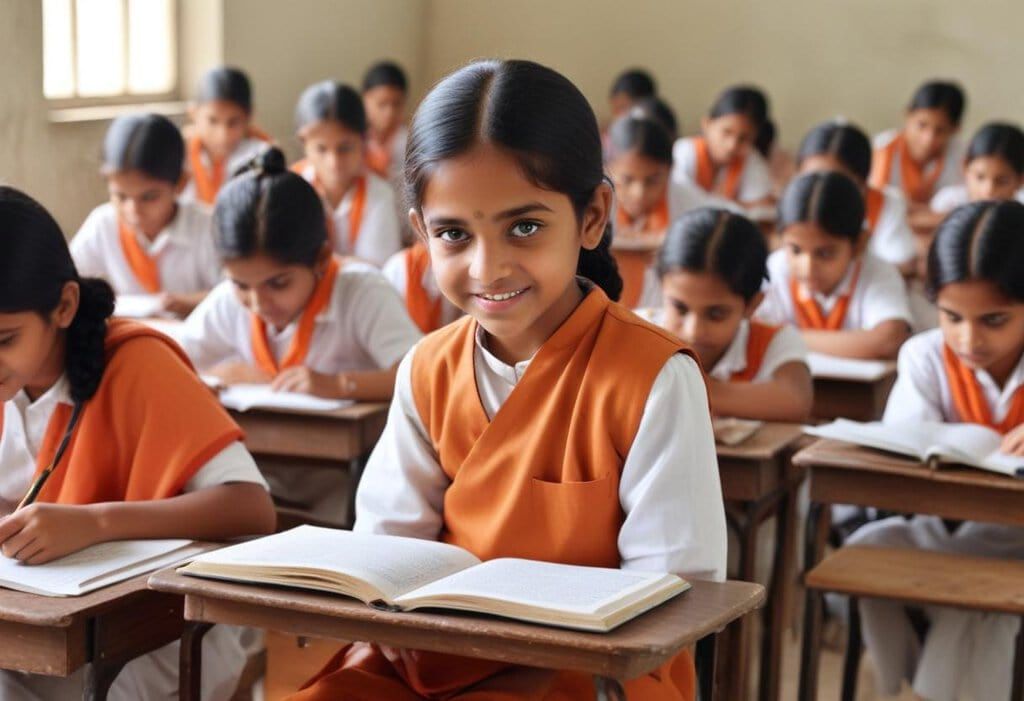
Why in News?
In a recent communication to all States, the Union Ministry of Education has clarified the definition of 'literacy' and the criteria for achieving 'full literacy' in the context of the renewed efforts for adult literacy under the New India Literacy Programme (NILP).
Overview of the New India Literacy Programme (NILP):
- The NILP aims to assist States and Union Territories in enhancing literacy among individuals aged 15 and above who are non-literate.
- This centrally sponsored scheme has a financial allocation of Rs. 1037.90 crore for implementation during the fiscal years 2022-23 to 2026-27.
- The goal is to enroll one crore learners annually across all States and Union Territories.
- Components of the Scheme:
- Foundational Literacy and Numeracy: Focused on basic reading, writing, and arithmetic skills.
- Critical Life Skills: Includes essential skills such as financial literacy, digital literacy, legal literacy, healthcare awareness, childcare education, and family welfare.
- Basic Education: Offers equivalency for various educational stages: preparatory (classes 3-5), middle (classes 6-8), and secondary (classes 9-12).
- Vocational Skills: Promotes skill development to help neo-literates secure local employment opportunities.
- Continuing Education: Engages learners in holistic adult education covering arts, sciences, technology, culture, sports, and other relevant topics.
- Beneficiary Identification:
- Beneficiaries are identified through door-to-door surveys conducted using a mobile application by surveyors in the States/UTs.
- Non-literates may also register directly through the mobile app from any location.
- Implementation and Volunteer Involvement:
- The scheme relies heavily on volunteerism for teaching and learning, allowing volunteers to register via a mobile app.
- It utilizes technology predominantly through online platforms for implementation.
- Teaching materials and resources are accessible via the DIKSHA platform of NCERT and through mobile applications.
- Other dissemination modes include TV, Radio, and Samajik Chetna Kendra to promote foundational literacy and numeracy.
- The scheme encourages the formation of Self-Help Groups (SHGs) and other community-based organizations to foster involvement.
- Definition of Literacy:
- Literacy is defined as the ability to read, write, and perform mathematical calculations with comprehension, alongside critical life skills such as digital and financial literacy.
- 'Full literacy' is equated with achieving a literacy rate of 95% within a State or Union Territory.
- A non-literate individual may be considered literate under the NILP after successfully completing the Foundational Literacy and Numeracy Assessment Test (FLNAT).
GS3/Science and Technology
What was the Great Moon Hoax of 1835?
Source: Indian Express
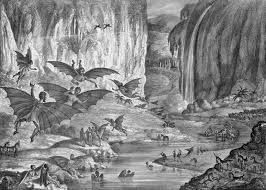
Why in News?
The Great Moon Hoax refers to a series of fictitious news articles published by The New York Sun in 1835, which claimed that life had been discovered on the moon. These articles were written in a sensational manner, capturing the public's imagination and leading many to believe in the fantastic claims presented.
- The series of articles falsely asserted that renowned astronomer John Herschel had made significant discoveries regarding extraterrestrial life on the moon.
- Published starting on August 25, 1835, these articles described bizarre creatures, including bat-winged humanoids (referred to as Vespertilio-homo), unicorns, and upright beavers, along with vivid depictions of the lunar landscape.
- Despite being entirely fictional and intended as satire, the articles gained widespread attention and were reprinted in numerous other newspapers.
Why the Hoax was conceived?
- To Mock Religious Influence on Science: The hoax aimed to satirize the intertwining of religious beliefs with scientific discourse, particularly in the field of astronomy. It showcased the absurdity that could arise when faith and science collide.
- Boost Readership: The primary goal behind the hoax was to enhance The New York Sun's circulation, which was initially around 8,000 copies per day. The sensational nature of the stories attracted more readers.
- Challenge Public Credulity: The hoax served to highlight how easily the public could be misled by sensational stories, encouraging readers to critically evaluate the accuracy of the information they consumed.
GS3/Science and Technology
Polaris Dawn Mission
Source: Money Control
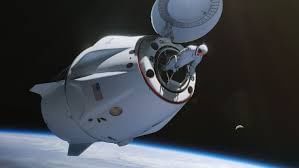
Why in news?
The Polaris Dawn Mission aims to innovate commercial space travel by conducting a high-altitude mission and the first-ever private spacewalk featuring non-professional astronauts.
Overview of Polaris Dawn Mission:
- This mission will be the first non-governmental endeavor to perform a spacewalk.
- It will reach an exceptional altitude of around 700 kilometers (435 miles) above the Earth.
- The mission will travel through areas characterized by intense radiation, specifically the Van Allen Belts.
- This altitude exceeds that of the International Space Station (ISS), which orbits at approximately 400 kilometers.
- Spacecraft Details:
- SpaceX is providing the Falcon 9 rocket and the Dragon capsule for this mission.
- The mission aims to break the altitude record set by NASA's Gemini 11 mission in 1966, which reached 1,373 kilometers.
- Crew and Leadership:
- The mission is led by billionaire entrepreneur Jared Isaacman, who previously financed and participated in SpaceX’s Inspiration4 mission, the first civilian mission to orbit Earth.
Understanding the Van Allen Belts:
- Composition: The Van Allen Belts are made up of charged particles trapped by Earth's magnetosphere, which shields the planet from solar storms and cosmic rays. These belts were first discovered in 1958 by American physicist James Van Allen.
- Location:
- Inner Belt: Positioned between 680 and 3,000 kilometers above the Earth's surface, primarily consisting of high-energy protons generated from interactions between cosmic rays and Earth's atmosphere.
- Outer Belt: Located at altitudes from 15,000 to 20,000 kilometers above the Earth, predominantly composed of high-energy electrons from solar wind.
- Radiation Risks: The spacewalk will subject the crew to higher radiation levels than those encountered on the ISS, with potential health risks including radiation sickness, tissue damage, and increased cancer risk.
- Significance of the Spacewalk:
- The mission's route through the Van Allen Belts—areas with significant radiation—will be critical for preparing for future Mars missions.
- The four astronauts will evaluate new spacesuits designed by SpaceX, which offer protection against the heightened radiation levels in the belts.
- Planned Health Research:
- Biological Effects of Space Travel: The mission will create biobanks to investigate how space travel affects human biology, focusing on conditions like Spaceflight-Associated Neuro-ocular Syndrome (SANS), which poses health risks in space.
- Decompression Sickness: Research will also be conducted on decompression sickness (DCS), which occurs when nitrogen gas bubbles cause damage to human tissue during space travel.
- Innovation in Space Communications: The crew will test laser communication technology provided by SpaceX's Starlink satellite network, vital for future missions to the Moon, Mars, and beyond.
Polaris Missions Ahead:
- Jared Isaacman has pledged to conduct three Polaris missions in partnership with SpaceX.
- The first mission is scheduled to last five days, with subsequent missions aimed at expanding the limits of human spaceflight, communications, and scientific exploration.
- The third Polaris mission will feature the inaugural crewed test of SpaceX’s reusable Starship spacecraft.
GS3/Economy
MUDRA 2.0 loans
Source: Indian Express
Why in news?
The Union Budget 2024 has raised the loan limit for the Tarun category under the MUDRA scheme to Rs 20 lakh, specifically aimed at individuals who have successfully repaid their previous MUDRA loans.
About Pradhan Mantri Mudra Yojana (PMMY)
- Launched in 2015, PMMY is a key initiative by the Government of India designed to provide affordable financing to micro and small enterprises.
- The scheme aims to bring underserved businesses into the formal financial framework by facilitating easier access to credit.
- Its primary objective is to "fund the unfunded," allowing small borrowers to obtain loans from a variety of financial institutions, including:
- Public Sector Banks (PSBs)
- Regional Rural Banks (RRBs)
- Cooperative Banks
- Private Sector Banks
- Foreign Banks
- Micro Finance Institutions (MFIs)
- Non-Banking Financial Companies (NBFCs)
Loan details:
- Loan amount: Up to Rs 10 lakh for income-generating activities in non-farm sectors like manufacturing, processing, trading, and services.
Eligibility:
- Indian citizens with feasible business plans for non-farm income-generating activities requiring credit of less than Rs 10 lakh can apply for MUDRA loans through banks, MFIs, or NBFCs.
Categories of Loans:
- Shishu: Loans up to Rs 50,000 aimed at new and micro enterprises.
- Kishore: Loans ranging from Rs 50,000 to Rs 5 lakh for businesses experiencing growth.
- Tarun: Loans from Rs 5 lakh to Rs 10 lakh for businesses seeking further expansion.
Subsidy:
- No direct subsidy is available under PMMY; however, if a loan is associated with a government scheme that offers capital subsidies, the loan can be accessed through PMMY along with those benefits.
Impact of MUDRA 1.0
- Loan disbursement: Over Rs 27.75 lakh crore has been disbursed to 47 crore small and new entrepreneurs, significantly enhancing the grassroots economy and providing access to formal credit for previously marginalized populations.
- Inclusivity: Around 69% of MUDRA loan accounts are held by women, and 51% are by SC/ST and OBC entrepreneurs, thereby promoting gender equality and social equity.
- Job creation: The scheme has played a crucial role in generating employment, especially in rural and semi-urban regions, fostering self-employment and the development of small enterprises.
Vision for MUDRA 2.0
- Expanded scope: MUDRA 2.0 aims to broaden its outreach, particularly in rural and semi-urban areas, while offering comprehensive services such as financial literacy, mentoring, and business support.
- Financial literacy programmes: Nationwide initiatives should be implemented to cover aspects like budgeting, savings, credit management, investment strategies, and digital literacy, which will help minimize default rates and enhance business operations.
- Enhanced Credit Guarantee Scheme (ECGS): To stimulate more lending to small and microenterprises, MUDRA 2.0 should incorporate an Enhanced Credit Guarantee Scheme (ECGS) to mitigate risks for financial institutions.
- Robust Monitoring and Evaluation Framework (RMEF): Utilizing technology, MUDRA 2.0 must establish a framework for real-time tracking of loan disbursements, usage, and repayments to ensure transparency, reduce misuse, and improve efficiency.
- Beneficiary impact assessments should be conducted to evaluate socio-economic outcomes and inform policy improvements.
GS3/Environment
Chile’s Atacama salt flat sinking due to Lithium mining
Source: Indian Express
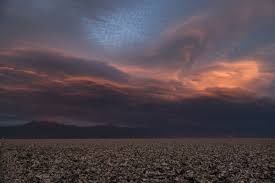
Why in News?
A recent study published in the journal IEEE Transactions on Geoscience and Remote Sensing reveals that Chile's Atacama salt flat is sinking at a rate of 1 to 2 centimeters per year as a consequence of lithium brine extraction.
Extraction Process
- The extraction of lithium involves pumping salt-rich water to the surface, where it is placed in evaporation ponds to isolate lithium.
- This method is commonly used in salt flats, particularly in the Atacama Desert, which is one of the largest sources of lithium globally.
Cause of Sinking
- Subsidence is occurring because the rate at which lithium-rich brine is extracted surpasses the natural recharge rate of the aquifers.
- This imbalance results in the ground sinking as more water is removed than is replaced.
Area of Concern
- The most affected region is located in the southwest area of the salt flat, where numerous lithium mining operations are concentrated.
- The sinking zone spans about 8 kilometers from north to south and 5 kilometers from east to west.
What is Lithium?
- Lithium, often dubbed as “white gold,” is a highly valued metal essential for producing rechargeable batteries used in devices such as laptops, smartphones, and electric vehicles.
- This metal plays a crucial role in global strategies aimed at combating climate change.
Environmental Impact of Lithium Mining
- Water Scarcity
- The lithium extraction process is significantly water-intensive, requiring approximately 2,000 tons of water to yield just one ton of lithium.
- This demand for water exacerbates existing water scarcity issues in the Atacama Desert, adversely affecting local indigenous communities and wildlife.
- Chemical Contamination
- Substances such as sulfuric acid and sodium hydroxide, used during lithium extraction, can contaminate the surrounding soil and water.
- This contamination poses serious risks to local ecosystems and threatens various species.
- Impact on Wildlife
- A study in 2022 revealed that lithium mining activities have contributed to a decline in the flamingo population in the Atacama region, primarily due to lower water levels that hinder their reproduction.
GS3/Environment
Registration of Exotic Pets-PARIVESH 2.0 Portal
Source: Hindustan Times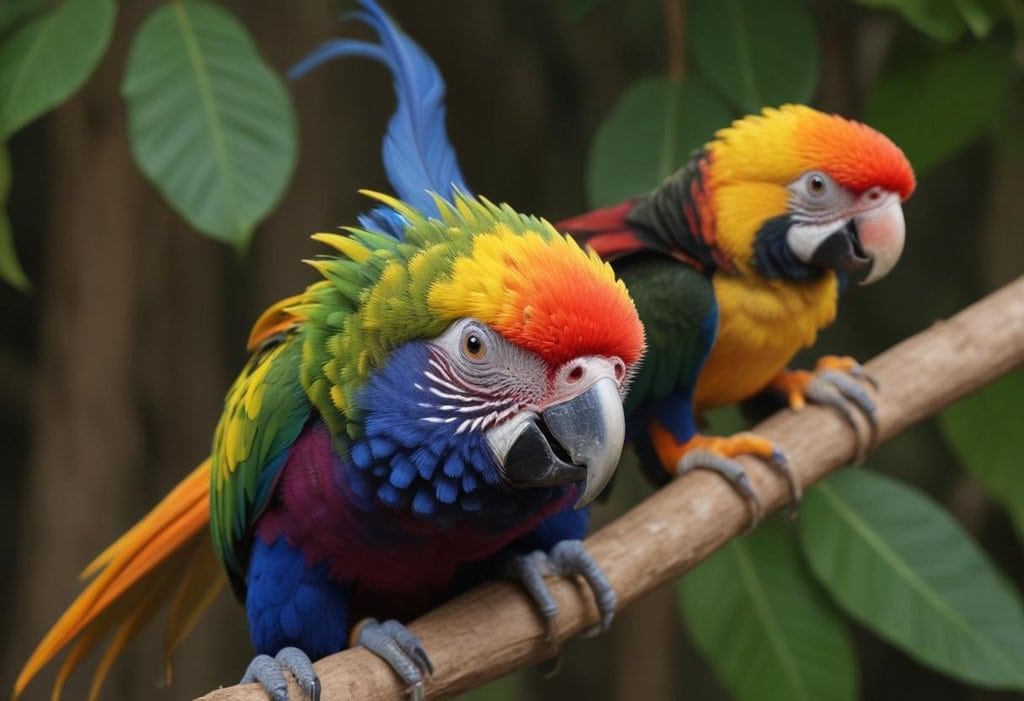
Why in News?
Recently, the Union Ministry of Environment, Forest and Climate Change (MoEFCC) has mandated the registration of exotic pets listed under Schedule IV of the Wildlife Act with state wildlife departments via the PARIVESH 2.0 portal within 6 months.
About Exotic Species:
- Definition: Exotic species are defined as animals or plants that have been relocated from their native environments to new areas, predominantly due to human intervention.
- Criteria: Under the Living Animal Species (Reporting and Registration) Rules, 2024, individuals who possess species listed in the Wild Life (Protection) Act, 1972, are required to report and register them.
- Wild Life (Protection) Amendment Act, 2022: This legislation requires the registration of possession, transfer, birth, and death of species that are included in the CITES Appendices and Schedule IV of the Wild Life (Protection) Act, 1972.
Concerns with Exotic Species:
- Non-regulation: A significant number of exotic species are imported and bred in India without appropriate registration, which can lead to risks such as zoonotic diseases.
- Pandemic risk: The lack of regulation in the trade and ownership of exotic animals presents a potential threat of pandemics.
- Smuggling concerns: Activists have raised alarms about the rising smuggling of endangered exotic animals into India, especially from Southeast Asia. Notable seizures have occurred in Assam and Mizoram, where animals like Kangaroos, Koalas, and Lemurs have been confiscated.
About the PARIVESH 2.0 Portal:
- PARIVESH 2.0 (Pro-Active and Responsive facilitation by Interactive, Virtuous, and Environmental Single Window Hub) is a web-based application developed by the Union Ministry of Environment, Forest and Climate Change (MoEFCC). It facilitates the online submission and monitoring of proposals concerning environmental, forest, wildlife, and coastal regulation zone clearances.
- Many living specimens of exotic animal species listed in the Act are currently held by various individuals, organizations, and zoos. These specimens must be reported and registered through the PARIVESH 2.0 portal.
- Important Information:
- The deadline for declaring possession of exotic animals listed under Schedule IV of the Wild Life (Protection) Act, 1972, is 28 August 2024.
|
61 videos|5403 docs|1144 tests
|
FAQs on UPSC Daily Current Affairs: 27 August 2024 - Current Affairs & Hindu Analysis: Daily, Weekly & Monthly
| 1. What is the National Medical Register (NMR) Portal? |  |
| 2. What is RHUMI-1? |  |
| 3. What is the New India Literacy Programme (NILP)? |  |
| 4. What was the Great Moon Hoax of 1835? |  |
| 5. How is Chile's Atacama salt flat being affected by lithium mining? |  |
















